The Plant Based Athlete
Nigel Mitchell, BSC, MSC, RD
Whether due to health, performance, ethical, environmental or financial reasons, a growing movement of people are reducing their intake of animal-based foods and following a full or part-time plant-based diet. Many athletes have shown interest in transitioning to a plant-based diet, but they often lack knowledge and confidence to make the changes. One of the main concerns athletes, coaches and parents have is being able to acquire sufficient and adequate protein on a plant-based diet.
Recent research has revealed that American pistachios are a good source of protein, with a Protein Digestibility Corrected Amino Acid Score (PDCAAS) of over 80. This means that American pistachios, within a balanced plant-based diet, can contribute significantly to quality protein intake.
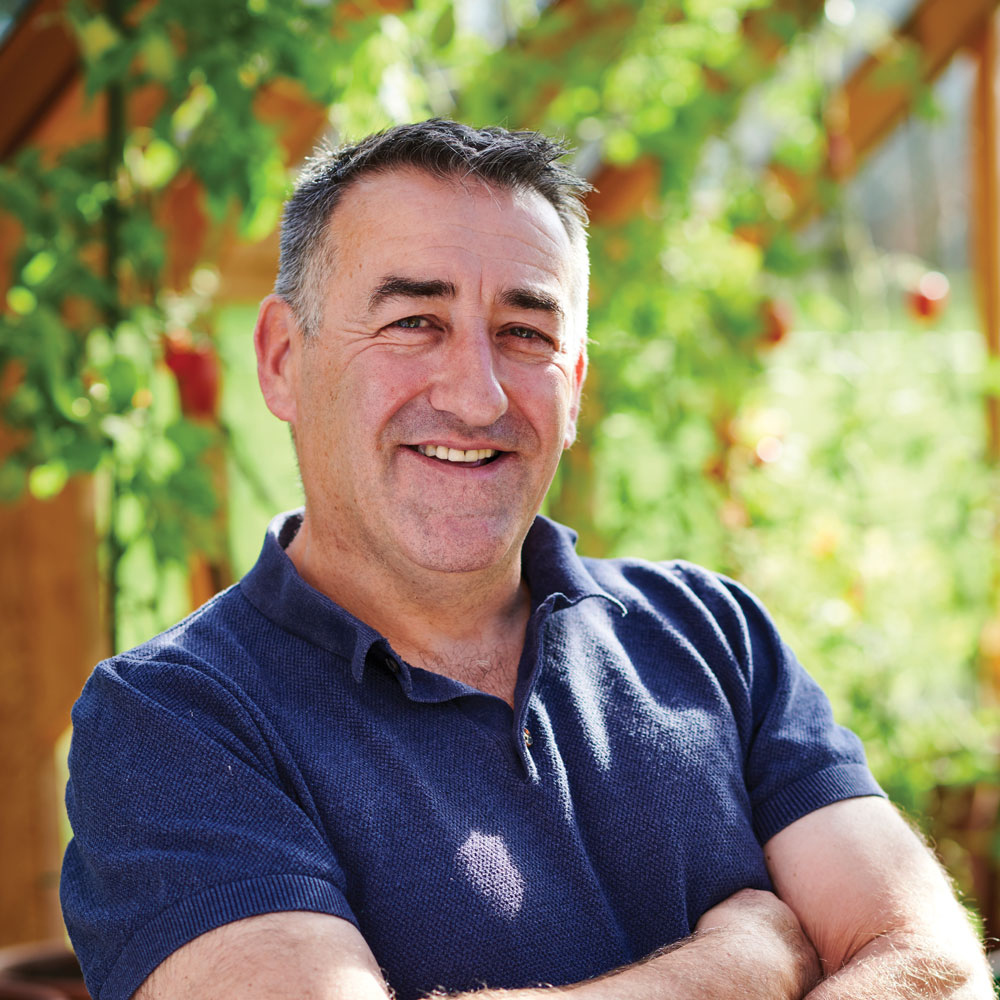 Courtesy Global Cycling Network/Joby Sessions
Courtesy Global Cycling Network/Joby SessionsNigel Mitchell, the former nutritionist for the Great Britain Cycling Team and Team Sky, now works for the EF-Education First pro team and a broad range of other elite athletes. He constantly manages his clients’ diets to ensure they can perform at the highest level. Having noticed an increased number of athletes switching to a plant-based diet, he extensively researched the demands of such a diet, trying it himself for two 12-week periods. The result? Inspired by the diet, he decided to write The Plant-Based Cyclist: Your Complete Guide to Plant Powered Cycling.
 Courtesy Global Cycling Network/Joby Sessions
Courtesy Global Cycling Network/Joby SessionsPriced at US$16.99, The Plant-Based Cyclist by Nigel Mitchell – the accessible, complete and practical guide to plant-powered cycling nutrition – is available exclusively from Global Cycling Network (GCN). Discover more from GCN at youtube.com/gcn.
Transitioning to a plant-based diet
For ethical performance and healthy reasons, more active people are interested in transitioning to a plant-based diet and thus significantly reducing their meat consumption. There’s no doubt that a plant-based diet can support an active and competitive lifestyle, but what potential issues could there be and what foods would optimize that kind of diet? Leading performance dietitian, Nigel Mitchell, draws on his own considerable knowledge, experience, and the input of other experts to address these questions.

The Case Study
Fellow nutritionist, Dr. Wiebke Elsner, presents the case study of Jan-Ole Hoffmann to show how following an optimal plant-based diet can make a positive difference. According to Elsner, Jan-Ole was 36 years old when she first met him. Hoffmann, a runner, cyclist and swimmer, was taking part in Elsner’s PhD study on meal replacements, and was in the “athlete group.” However, during one of Hoffmann’s two-week checkups, he confessed he hated the meal replacements and only managed to get through it by eating upwards of 100g of pistachios a day. His body composition results were the best of all of the athletes. So, Elsner decided to dig a bit deeper and make Hoffmann a case study.
The Goals and the Plan
Hoffmann’s main goals focused on getting fitter, healthier and in shape. He agreed to follow any diet as long as meal replacements weren’t involved. He and Dr. Elsner opted for a 100 percent plant-based diet. Hoffmann also began a balanced and structured training plan at his local gym.
The 3 Golden Rules
Elsner didn’t want the diet to be too prescriptive, so she based it around these three rules:
- If an ingredient sounds artificial or looks processed, don’t eat it.
- Don’t just eat beige grains and greens, try to make every plate of food as colorful as possible.
- Make sure that each plate contains 50 percent of raw fruit and vegetables.
Reeducating His Gut
Eating raw fruit and vegetables was important for changing the microbiome in Hoffmann’s gut. After 6-8 weeks of eating a predominately raw plant-based diet, the microbiome changed significantly and sent signals to Hoffmann to eat more of the healthy food choices. In as little as 2-3 weeks, Jan-Ole found his meat cravings had gone.
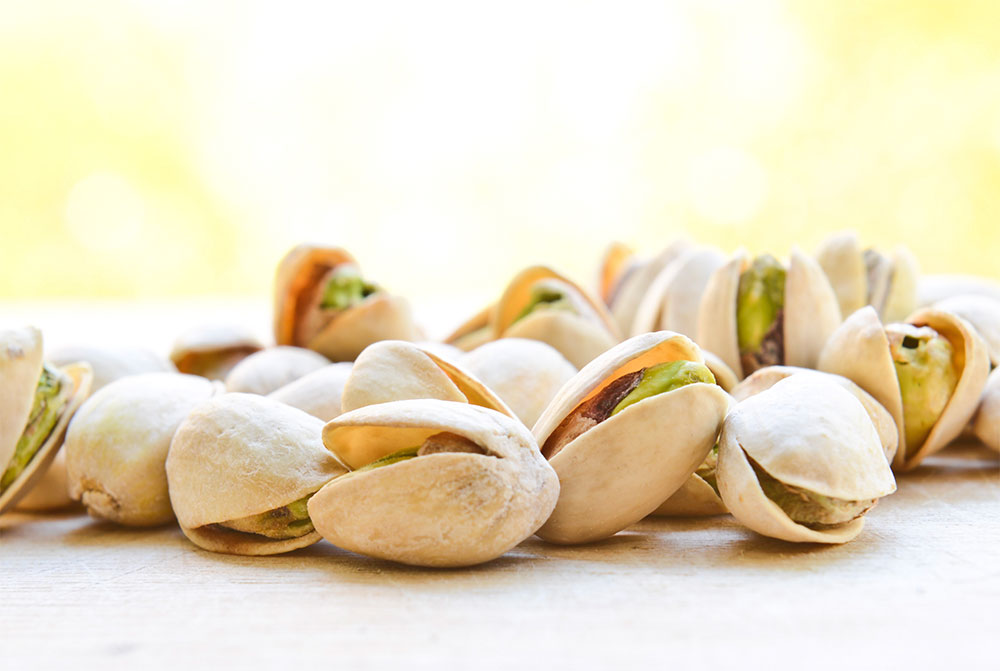
Daily Diet
His typical daily diet was based on three main meals and plenty of snacking on nuts, including pistachios, his favorite, and raw vegetables. For breakfast he typically ate oatmeal or spelt flakes with a plant-based milk, nuts and dried fruit. At lunchtime, knowing he would be training in the afternoon, he had plenty of whole grains, such as quinoa, for carbohydrates and plenty of fruits and vegetables. Dinner would be more protein focused, so he would eat a lot of legumes along with more salad and vegetables.
Results
Hoffmann followed this strict diet for about five months; the results were pretty impressive:
-
Body weight decreased 6.9kg (15 lbs.)
-
Muscle mass increased 7.4kg (16.3 lbs.)
-
Fat mass decreased 8.4kg (18.5 lbs.)
-
Extracellular water, a good indicator of cellular health, decreased 10 percent
-
Total body water decreased 1.6 liters; showing better hydration
-
Phase angle, a measurement of the integrity of cell membranes that correlate strongly with strength and lean tissue mass, increased 2.2 degrees. This is a dramatic change. Dr Elsner worked with morbidly obese patients who, having lost 50kg (110.2 lbs.), only show a change of 1 degree.
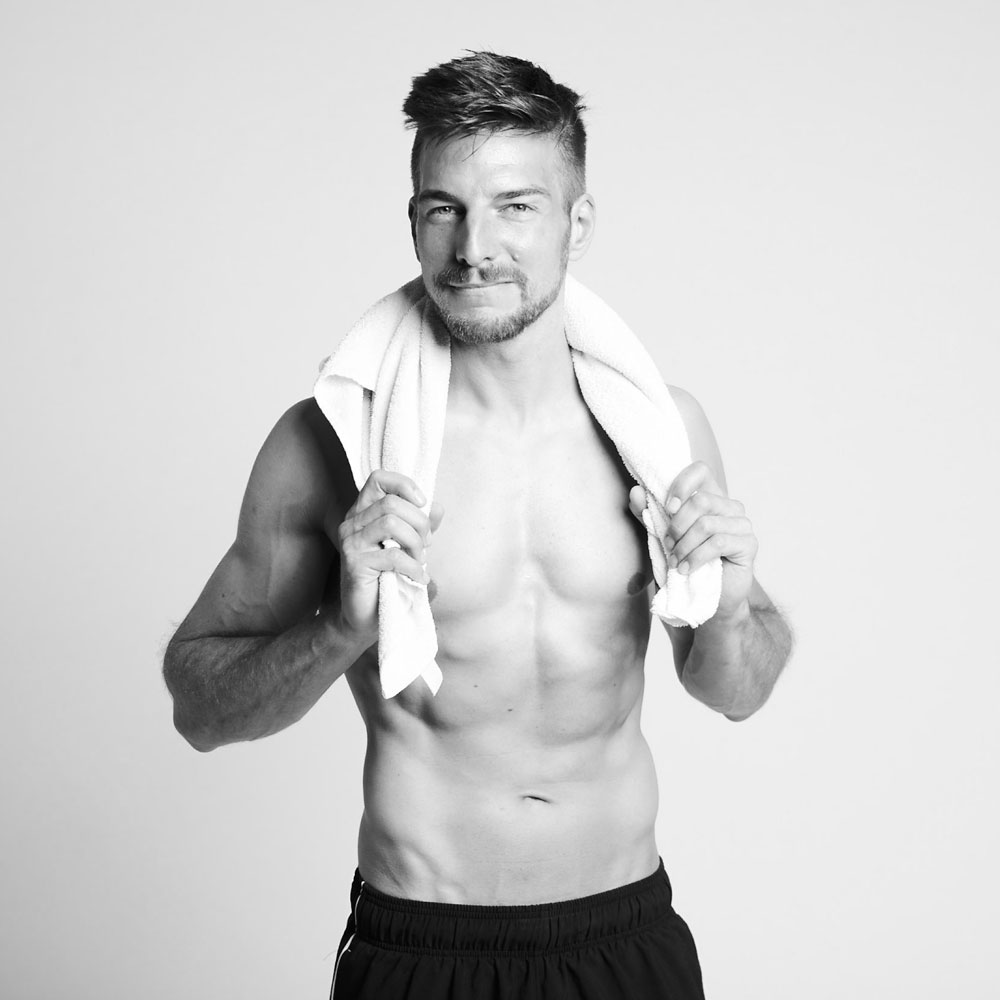
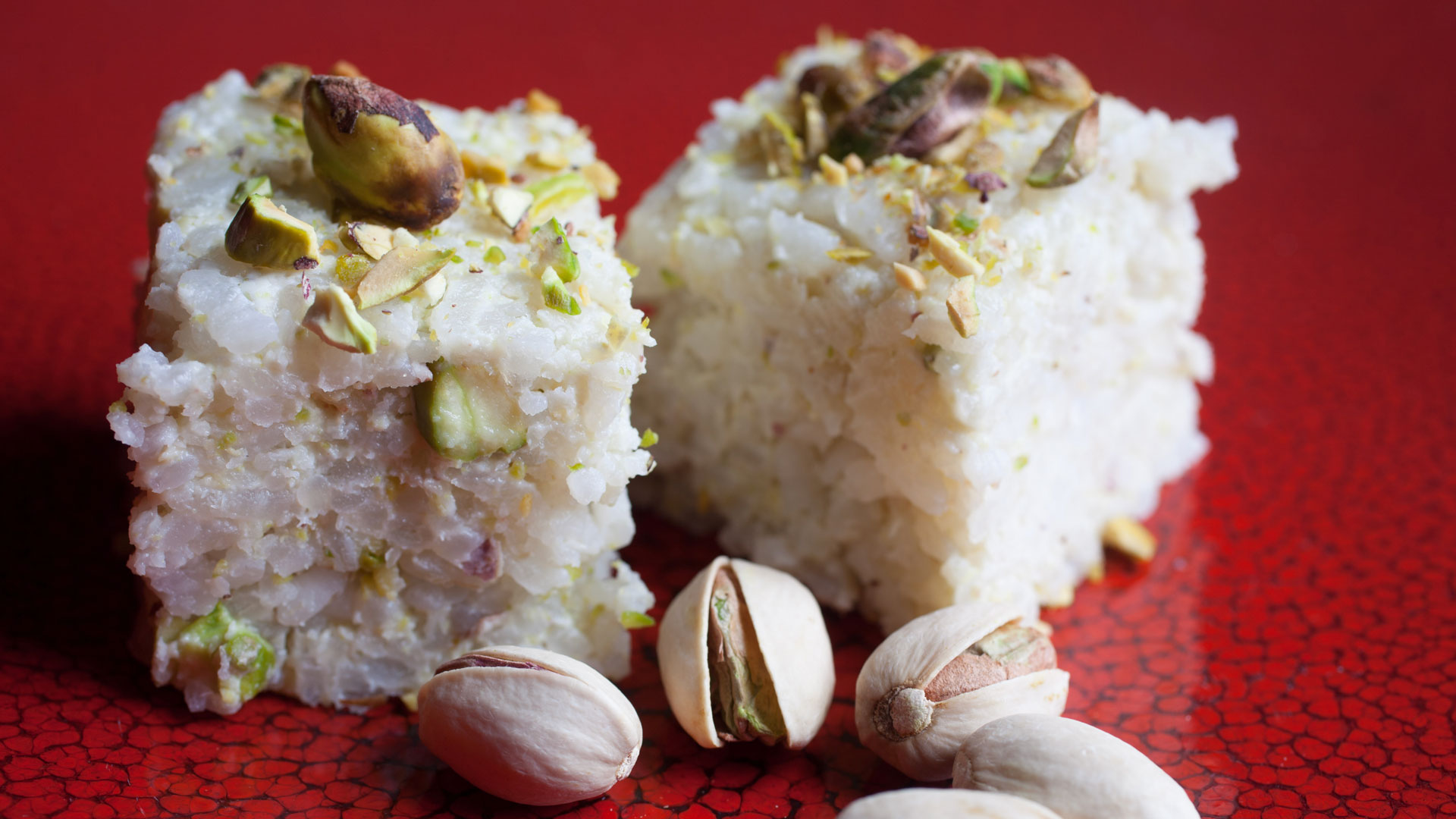
Recipes for the Athlete’s Kitchen
Protein
Why We Need Protein
Protein, essential for the body’s growth and repair, consists of approximately 15 percent of the body’s total mass. It’s important that everyone consumes enough protein, but it’s especially important for athletes.
The necessity for adequate protein, which provides strength and power to the body, has been long known. But the need of protein for endurance athletes and general well-being has now been scientifically established. Protein not only facilitates the maintenance and building of muscle but also is a response to endurance training, and is used for the creation of mitochondria, the “powerhouses of cells” where energy is produced—handy for a ride, run or big session in the gym!
The Building Blocks of Life
All proteins are composed of long chains of molecules known as amino acids, often referred to as the “building blocks of life.” Despite there are only 20 of them, in different configurations, they are able to form complex structures in the body.
When a person ingests proteins, the digestive system uses enzymes known as peptides to break down the proteins into their constituent amino acids. These are then reassembled and used throughout the body.
If the body’s protein demand is not met, the building blocks cannot form what the body needs, and the amino acids will start disassembling its own protein—muscles—to make up the deficit.
How to Get the Amino Acids Needed in A Plant-based Diet
Protein digestibility corrected amino acid scores (PDCAAS) reflect the digestibility, quality and completeness of proteins. Whey protein, which is often regarded as one of the best quality proteins, has a score of 99; soya protein has a score of about 93, and wheat 50.

Recent research has shown that American pistachios has a PDCAAS score of just over 80 and is now considered a complete protein for adults, adolescents and children over 5. Other high-scoring complete plant proteins include quinoa and buckwheat.
It’s not a coincidence that many classic food combinations, such as rice and peas, will also deliver a full complement of essential amino acids. So, as long as a wide variety of plant proteins is consumed (including the complete proteins), the body will get the all the amino acids needed.
How Much Protein Is Needed for Those with an Active Lifestyle?
An active man would typically require 1.2-1.6g/kg/day of protein; with women typically requiring about 15 percent less (0.9-1.2g/kg/day). For an 80kg man this translates to 96-128g of protein; for an 80kg woman, it’s 82-109g of protein.
Although hitting these targets is important, there’s no point in exceeding them. Your body won’t store excess protein, it’ll simply convert it to urea and excrete it.
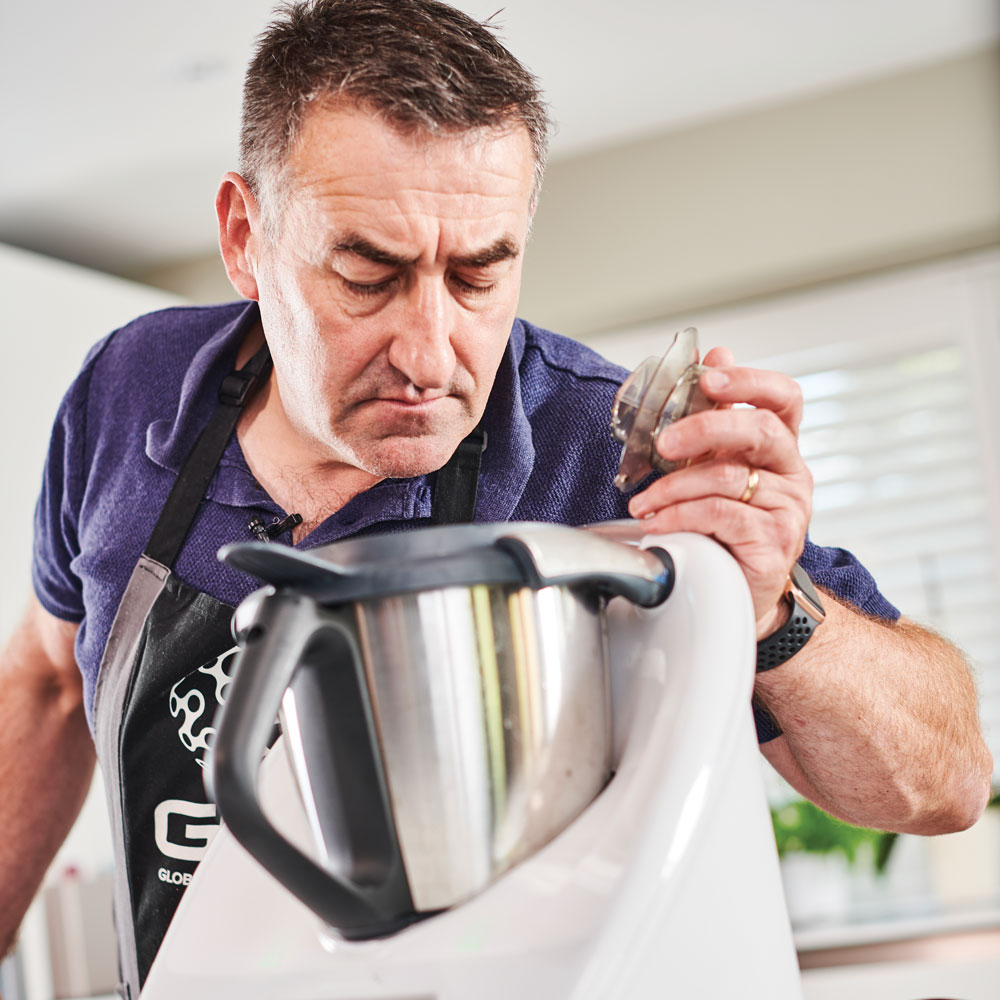
Daily Diet Example
Breakfast
Oat porridge made with plant-based milk and topped with seed, berry and nut mix = 15.4g
Mid-Morning Snack
A 1 oz (28g) serving of pistachios = 6g
Lunch
Whole-meal pita bread with mixed bean salad and hummus = 26.3g
Afternoon and Post-Workout Snacks
A 1 oz (28g) serving of pistachios = 6g
Soya milk and banana smoothie = 9g
Evening Meal
Quorn Bolognese and mixed grains = 35.9g
Bedtime Snack
Soya yogurt and pistachios = 9g
Total Grams of Protein= 105.6g
What about Plant-Based Protein Supplements?
As can be seen from the example above, achieving adequate protein intake from a plant-based diet isn’t that difficult. However, to meet the upper end of the range to build lean mass, a convenient post-workout protein snack can provide a simple solution. The most common are soy based, but more recent products combine a mixture of vegetable protein, such as rice and pea proteins, which have improved the taste, quality and availability, and would typically deliver 20g of quality complete protein per serving.
Take-Home Message
It’s perfectly possible to obtain the protein required to lead an active lifestyle while following a plant-based diet. To achieve this will require some thought, planning and taking in protein from a wide and varied range of plant-based sources, like snacking on pistachios, which can be a great a contributor to the overall diet.
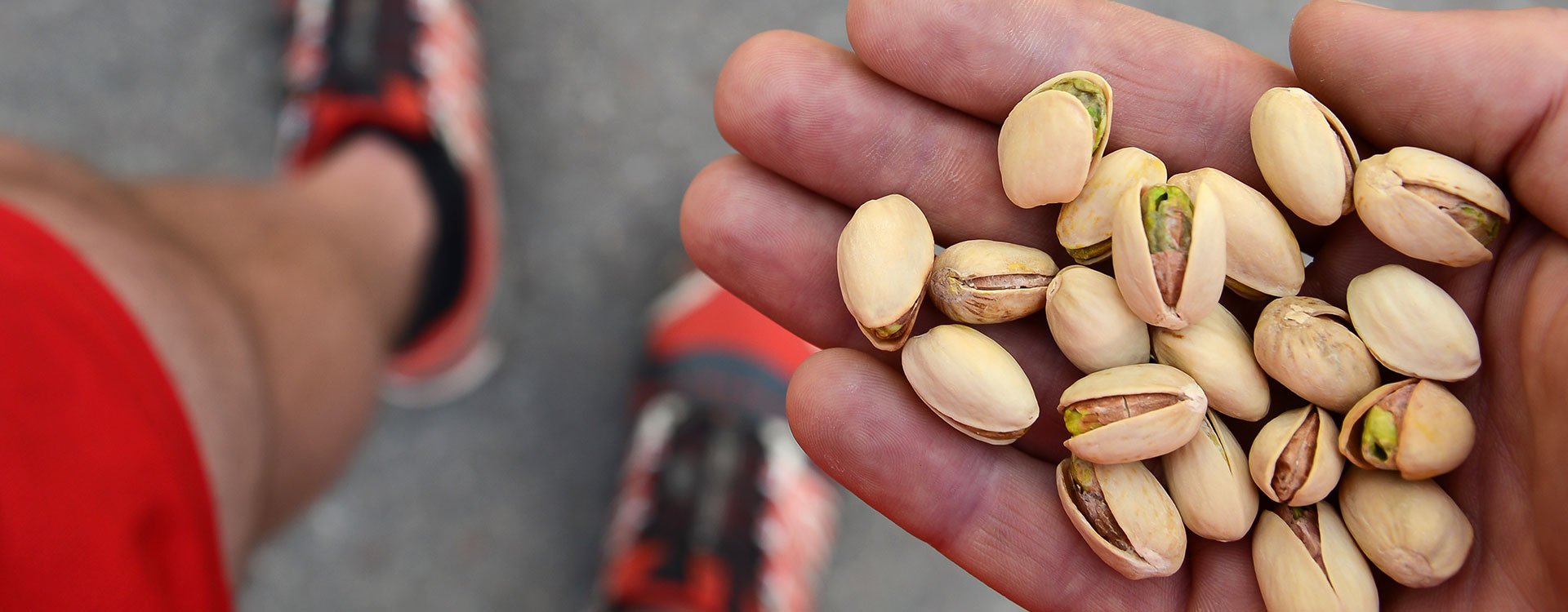
Recovery from Endurance Activities
Why Recovery Is Important
Recovery nutrition is all about giving the body the fuel it needs to replenish, rebuild and adapt to the training stimulus it has endured. If fuel isn’t provided, the gains from the workout will be compromised and will limit performance and adaptation in subsequent sessions. Poor recovery nutrition can also have an impact on the maintenance of lean tissue mass and immune function.
When It’s Important (and When It’s Not)
Although getting recovery nutrition right can be important, but how important depends on the length and intensity of the workout. For most runs or rides that are about 90 minutes in duration, there’s no need for any specific recovery protocols. Unless it’s an especially sustained hard effort, such as a 25-mile time trial, or particularly demanding on your musculoskeletal system, such as sprint intervals, a snack like a handful of pistachios would be ideal to satisfy hunger until the next meal. Drinking a recovery drink, as a matter of course after every workout, will only result in unnecessary calories, potential fat gain and a waste of money.
For longer and harder sessions that last more than 90 minutes, the body will be significantly depleted, and will require more recovery nutrition, and a meal should be consumed within two hours, especially if another exercise is scheduled for the next day.
Muscular vs Metabolic Recovery
There are really two main aspects of recovery that needs consideration from three points of view: nutritional, muscular and metabolic.
Muscular recovery is about rebuilding and repairing our muscles that have been damaged and stressed by the exercise. When we exercise, we actually cause some of the proteins within our own bodies to start to breakdown. This is known as a catabolic response. Once we finish exercising, we’re in a state where our bodies can rebuild and extend these proteins, as long as they have the correct fuel. This rebuilding process is referred to as an anabolic phase. For endurance athletes, this rebuilding process is primarily concerned with producing mitochondria, the energy-producing powerhouses of cells.
Metabolic recovery is primarily concerned with restocking the body’s energy and fluid, in particular the carbohydrate stores. It also involves the muscles replenishing their intra muscular fat, which may have also been used during the workout.
A lot has been talked about in regards to the “golden window of opportunity” and replenishing the body’s carbohydrate stores, and that we should prioritize taking in carbs within 20-30 minutes of finishing our workout. However, the studies that led to this advice involved completely depleting the subject’s carbohydrate stores. If we fuel well during our workout, this shouldn’t happen. The body would be able to replenish its stores via regular meals.
Getting the carbohydrates in quicker is important if we’re training or racing again the following day or doing a double session day. If we have chosen foods that don’t replenish us, or we emptied our tank on a finishing effort, getting those carbohydrates in as quickly as possible would be advisable.
What the Body Needs
To fuel muscular recovery, quality protein is required rather than carbohydrates. A 20g serving of plant-based protein is required, and it can come from a variety of foods or even a vegan protein powder mixed in 500ml of water. Remember, a serving of pistachios provides 7g of protein.
For metabolic recovery, we should aim to eat within 2 hours of finishing our workouts as well as consume 1g of carbohydrate per kg of bodyweight. For rides or runs of over two hours, the amount should increase to 1.5g/kg.

How the Pros Recover
When I’m working on a stage race, my priority after my riders cross the line, is to get a protein shake into them as quickly as possible. Along with providing the 20g of quality protein they require for muscular recovery, it also delivers valuable hydration and stops them reaching for a can of cola.
Once they’re back on the team bus, I encourage them to keep hydrating, and are given a rice-based recovery meal that’s easy to digest and will replenish their carbohydrate stores. This will see them through to their evening meal, once they’re back at the hotel.
Top Tip
We can actually kick-start our recovery before the workout ends by measuring out a serving of plant-based protein powder and using this to fill our final drink bottle. By sipping this during the final 20-30 minutes of the run or ride while cooling down, will be both the end of our current session and the start of the next.
Plant-Based Recovery Drink.
This is a simple tasty plant-based recovery drink that provides about 20g of protein and 30g of carbohydrates. If more carbohydrates are needed, add another banana or also add frozen berries, which can really make the drink refreshing.
Soya Milk 350ml (12oz)
Banana 1 medium
Pistachio butter 30g (1 oz)
Add all the ingredients into a food processor and blend until smooth. If you do not have the pistachio butter you can use whole kernels but soak them overnight in the soya milk and then blend until smooth.
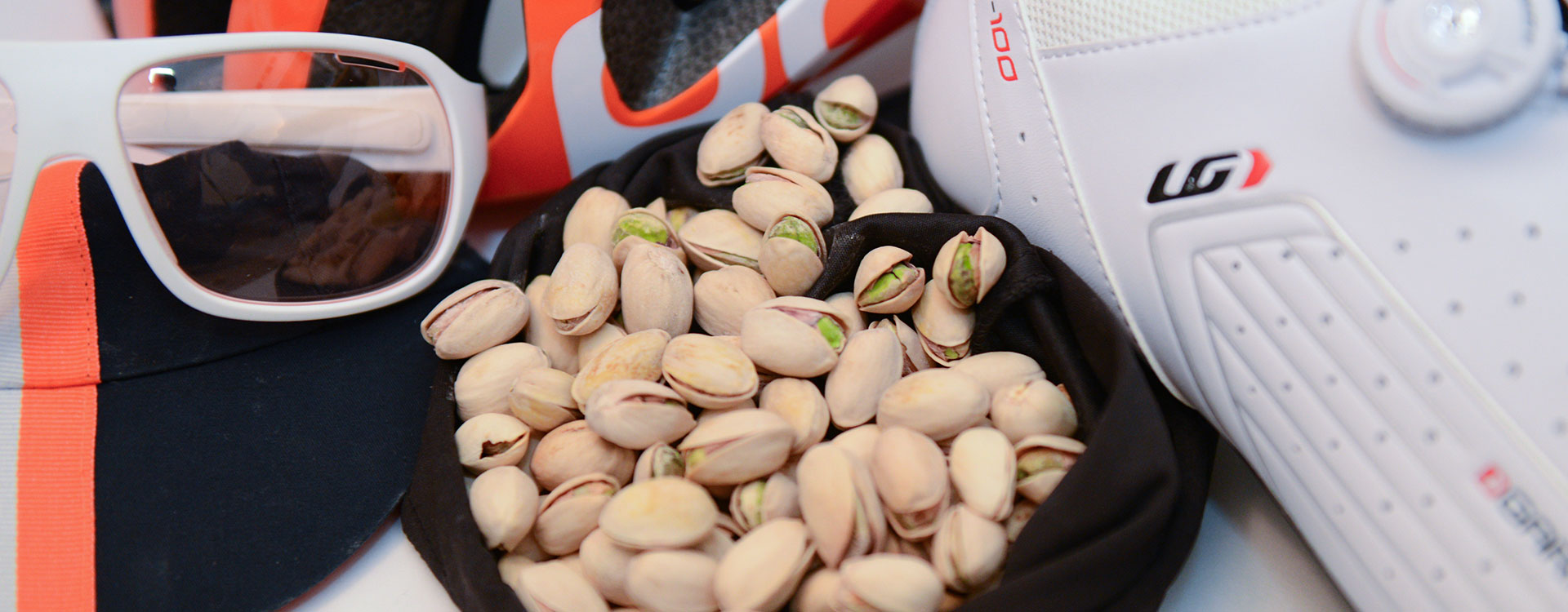
Top Tips for Cyclists
With the long winter months almost behind us, many UK cyclists will have an eye on returning to the roads and trails after an extended break from riding. It’s important during this ‘pre-season’ period that cyclists understand their physical and nutritional needs to return most efficiently to tip-top shape ahead of the warmer months.
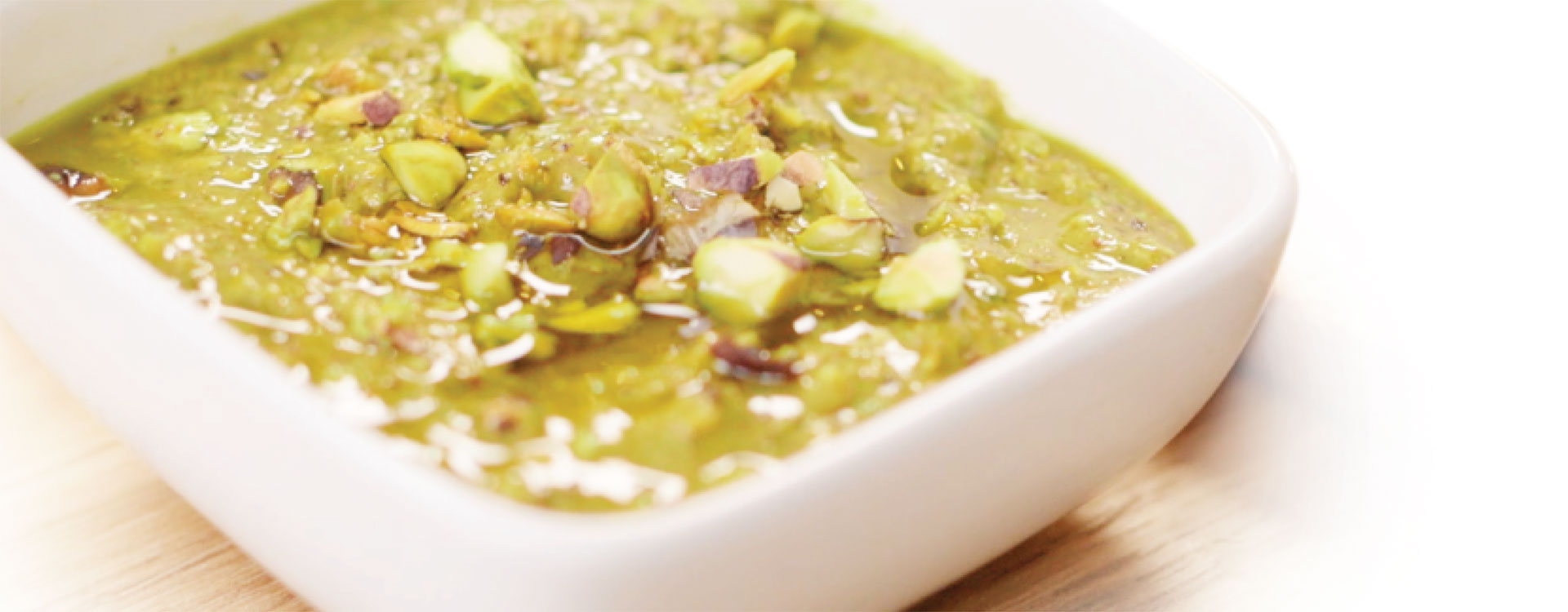
Why We Should Love, Not Fear, Fats
Equally important to performance are fats. Although much demonized in the past, we now appreciate how important the right blend of fats in our diets is for health and performance. Like protein, there are considerations to be made to ensure we’re getting the fats we need when following a plant-based diet.
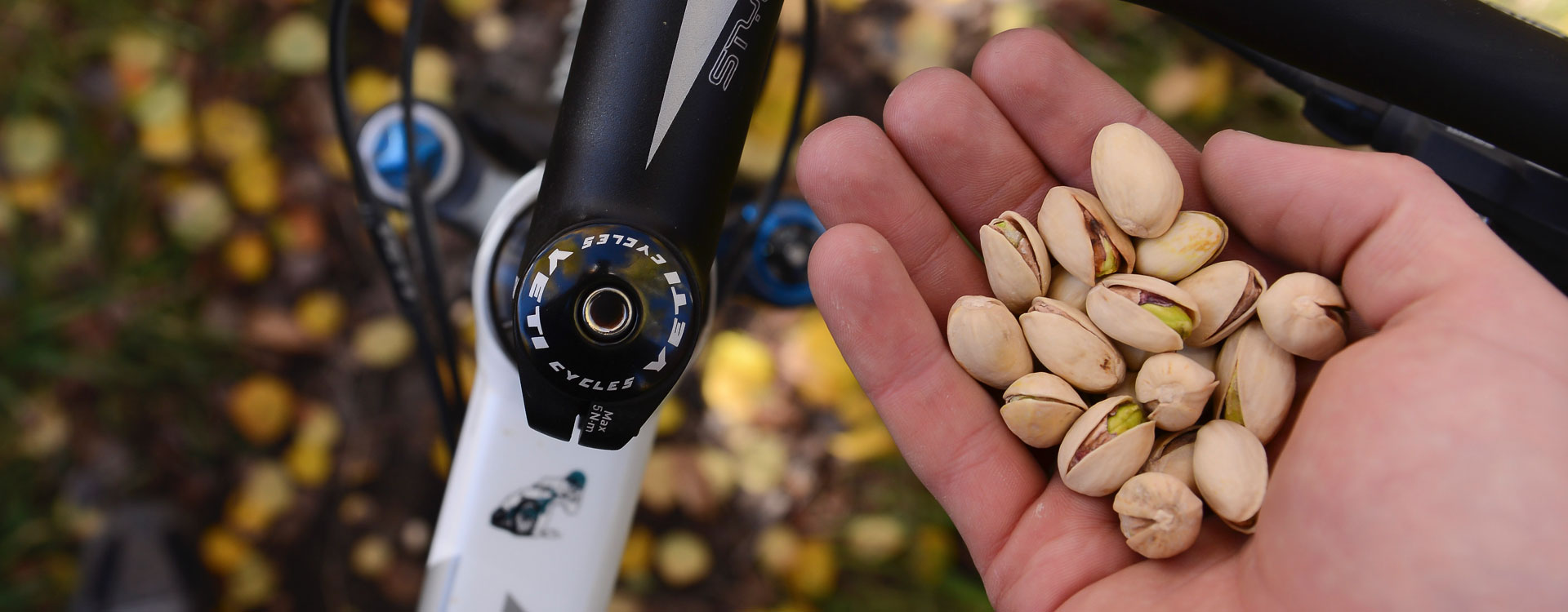
Micronutrients
Both protein and fats are known as macronutrients and, along with carbohydrates, are primarily used for growth, repair and energy production. Think of them as “go nutrients.” Along with the macronutrients are the vitamins and minerals that are collectively referred to as “micronutrients.” We need these micronutrients for health, wellbeing and the smooth running of the body, but only in relatively small amounts. Think of these as “glow nutrients.” As with the macronutrients, by eating a wide, varied and balanced plant-based diet, there should be no issues with obtaining all the micronutrients the body needs for both health and performance but there are some concerns to be aware of.








